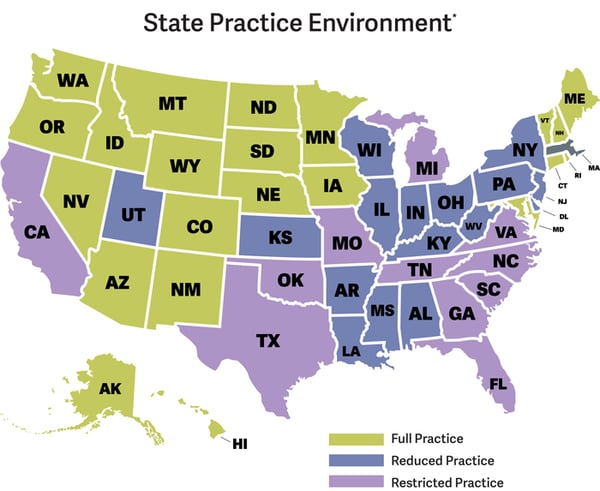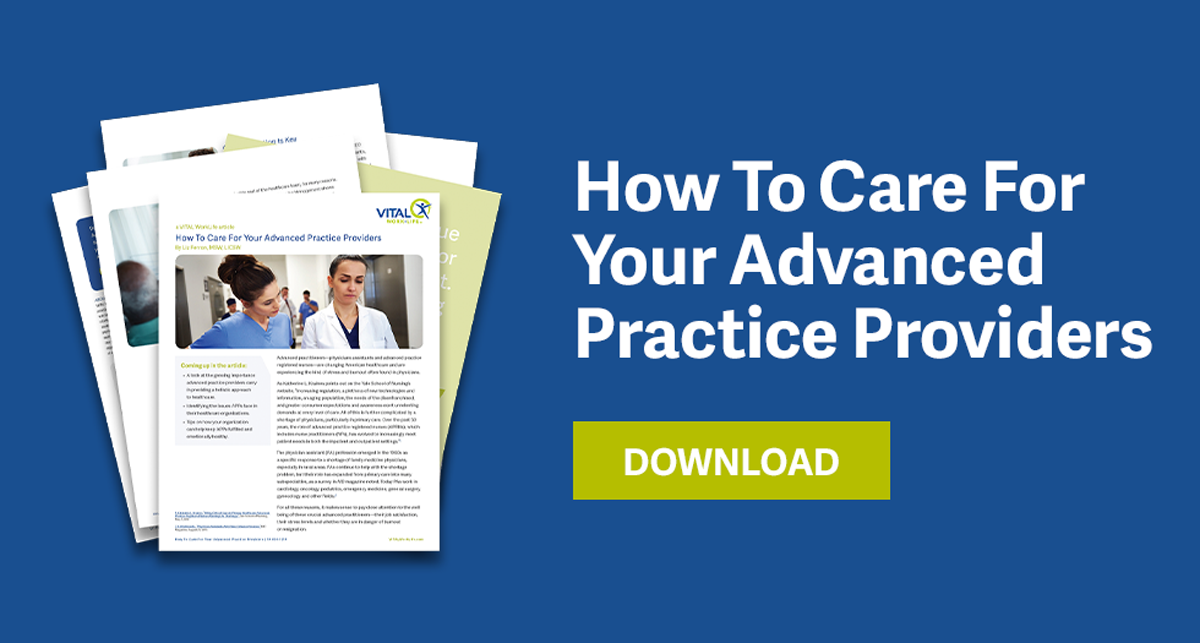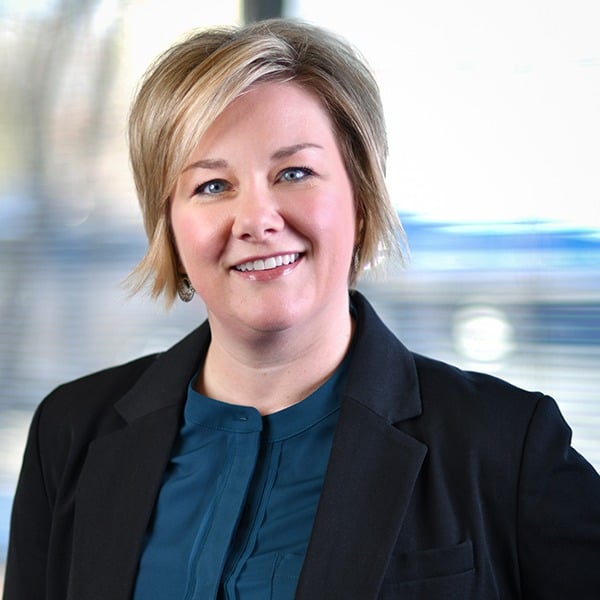Stress Source: Disrespect from Patients
Patients are often uncertain about the role of this non-physician practitioner—what they can and cannot do. Some patients may not understand their APRN has undergone rigorous training and may ask to see “a real doctor.” It’s a prime source of demoralization for these skilled practitioners.
What Organizations Can Do:
Provide patients with information on the training and qualifications of APRNs to help with patient understanding and acceptance of their role.
Stress Source: Varying Scopes of Practice and Role Ambiguity
Advanced Practice Registered Nurses (APRNs)—nurse practitioners (NPs), clinical nurse specialists (CNPs), certified registered nurse anesthetists (CRNAs) and certified nurse midwives—have become crucial members of care teams in healthcare organizations.
But the scope of an APRN practice varies—as do licensure requirements. US states allow varying scopes of practice, each falling into three basic categories:

Full practice: State practice and licensure law provides for all nurse practitioners to evaluate patients, diagnose, order and interpret diagnostic tests, initiate and manage treatments—including prescribe medications—under the exclusive licensure authority of the state Board of Nursing.
Reduced practice: State practice and licensure law reduces the ability of nurse practitioners to engage in at least one element of NP practice. State law requires a regulated collaborative agreement with an outside health discipline in order for the NP to provide patient care or limits scope of one or more elements of NP practice.
Restricted practice: State practice and licensure law restricts the ability of a nurse practitioner to engage in at least one element of NP practice. State requires supervision, delegation or team-management by an outside health discipline in order for the NP to provide patient care.
Even within the same scope of practice there is variability in what advanced practitioners do from organization to organization and supervising physician to supervising physician, leaving many of these valuable practitioners uncertain about their role and responsibilities—introducing a prime source of stress.
What Organizations Can Do:
Offer clear job descriptions and clarity about expectations, at the organizational and care team levels.
Stress Source: Physician-Type Pressures
Advanced practitioners do many of the same things physicians do—so it stands to reason they experience many of the same pressures and sources of stress as physicians. And while stress and burnout among physicians has been amply studied and discussed1, the topic has been less well covered in the world of the advanced practitioner.
What Organizations Can Do:
Increase the awareness of the pressures under which these medical professionals work to create a culture of well being for all givers of care. As organizations do with their physicians, consider measures such as:
- Scheduling—giving APRNs more time to care for each patient.
- Mentorship—to help the practitioners “learn the ropes,” and provide them with practical and emotional support.
- Access to training—for their professional advancement.
Awareness and action on the part of the organization can help APRNs thrive. For more on the role of advanced practitioners—their unique needs and challenges, and what they need to thrive—download our article “How To Care For Your Advanced Practitioners.”
1Rikinkumar S. Patel et al., “Factors Related to Physician Burnout and Its Consequences,” Behavioral Sciences, October 25, 2018
* "State Practice Environment,” American Association of Nurse Practitioners



